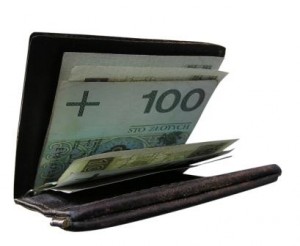… a simple method to pry wallets open
If you are in business, you are bound to run into the two ends of the customer spending scale: tightwads and spendthrifts. These human traits intrigued researchers Scott I. Rick (Wharton), and Cynthia E. Cryder, and George Loewenstein (Carnegie Mellon) so much, they conducted a two and a half year study to understand how these traits affect spending habits.
tightwads [are] individuals “who feel intense pain at the prospect of spending money …
13,327 people were given a survey and asked to rank the extent they would call themselves as either a tightwad or a spendthrift. The researchers defined tightwads as individuals “who feel intense pain at the prospect of spending money, and therefore tend to spend less than they would ideally like to spend.” Spendthrifts were categorized as people who “feel insufficient amounts of pain at the prospect of spending and therefore tend to spend more than they would ideally like to spend.” Finally, they defined a group in the middle called “unconflicted.” Unconflicted customers incur “a moderate amount of pain during the spending process and thus tend to spend about what they want to spend”.
The survey results found that:
- Spendthrifts made up 15% of the population
- Tightwads made up 24% of the population
- Unconflicted made up 60% of the population
 Taking this foundation, the researchers conducted an experiment. 538 people were told that in exchange for their participation in a survey they would receive their choice of a gift of 1 of 4 boxed DVD sets. The gifts would be delivered at no charge within 4 weeks. The participants were then offered the opportunity to have the gift shipped overnight for an additional $5. This question was framed in one of two ways. The expedited shipping could be had for:
Taking this foundation, the researchers conducted an experiment. 538 people were told that in exchange for their participation in a survey they would receive their choice of a gift of 1 of 4 boxed DVD sets. The gifts would be delivered at no charge within 4 weeks. The participants were then offered the opportunity to have the gift shipped overnight for an additional $5. This question was framed in one of two ways. The expedited shipping could be had for:
- a “$5 fee”
- a “small $5 fee”
tightwads were 3.5X more likely to pay …
The results were dramatic! The findings showed that:
- the unconflicted were not significantly swayed by the frame of the offer
- spendthrifts were only 9% more likely to pay the “small $5 fee” than the “$5 fee”
- tightwads were 3.5X more likely to pay the “small $5 fee” than the “$5 fee”
By reducing the PAIN of the decision by adding the word “small” these researchers were able to get tightwad customers to say YES 3.5X more than they would otherwise!
What’s the takeaway?
Make purchases painless or less painful (e.g. free delivery, financing, in-home services, bonuses, etc.) but remember to TELL customers that the pain is reduced. Even a small word like “small” in your copy can take your sales a long way!
![]()

